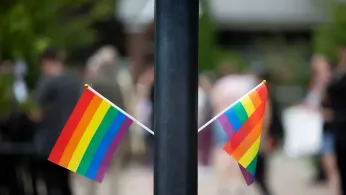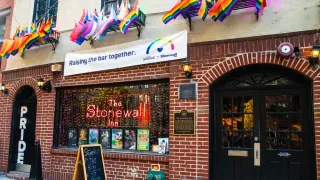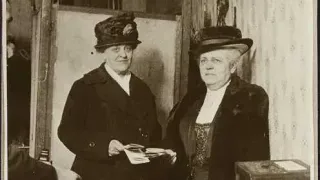
Sep 13
Federal Judge Dismisses Lawsuit Challenging Town's Ban on Pride Flags
READ TIME: 3 MIN.
A federal judge has ruled that Hamtramck, Michigan—a city celebrated for its multicultural makeup—can enforce a ban on displaying Pride flags on public property, concluding that the city’s policy does not violate the U.S. Constitution. The decision, handed down by U.S. District Judge David Lawson earlier this week, dismissed a lawsuit filed by local residents and advocates who argued that the ban infringed on their First Amendment rights to free speech and equal protection under the law .
Hamtramck, a city of approximately 27,000 residents encircled by Detroit, has long prided itself on being a haven for immigrants, with more than 40% of its population born outside the United States, many of Yemeni and Bangladeshi descent . In June 2023, the city council—composed entirely of Muslim members at the time—passed a resolution allowing only five specific flags to be displayed on city-owned flagpoles: the American flag, the Michigan state flag, and flags representing the international character of Hamtramck’s community .
Prior to the policy’s enactment, Pride flags had been displayed on public property during June in both 2021 and 2022. However, some council members stated that public displays of the Pride flag conflicted with the beliefs of certain members of their faith . The policy was officially titled the “Resolution to Maintain and Confirm the Neutrality of the City of Hamtramck Towards its Residents,” and was framed as an attempt to ensure fairness and avoid the endorsement of any particular group or ideology on city property .
Following the council’s decision, local residents and LGBTQ+ advocates filed a lawsuit contending that the ban discriminated against the LGBTQ+ community and violated constitutional protections. Plaintiffs argued that the policy was motivated by anti-LGBTQ+ sentiment and that it unfairly targeted Pride flags while masking its intent behind claims of neutrality .
In his ruling, Judge Lawson acknowledged the heated debate but ultimately found that the city’s policy did not infringe on constitutional rights. He noted that the ban applies equally to all non-governmental flags, rather than singling out queer symbols, and that the plaintiffs failed to establish evidence of religious or anti-queer animus driving the resolution . "Hamtramck’s refusal to display the Gay Pride flag did not violate the Constitution," Lawson wrote .
The ruling has sparked strong reactions from both supporters and critics. Mayor Amer Ghalib, a native of Yemen and a Muslim, defended the decision and reiterated that the policy aims to prevent the display of any group’s flag—including those that could be considered extremist or hateful—on public property . “We’re not targeting anybody. We are trying to close the door for other groups that could be extremist or racist,” Ghalib said in 2023 .
Some city officials have cited the need for neutrality and adherence to the rule of law, pointing to incidents in which members of the city’s Human Relations Commission were removed after displaying Pride flags on city property in violation of the new resolution .
On the other side, queer advocates and allies have condemned the policy and the ruling, arguing that it sends a message of exclusion to queer residents and undermines efforts to foster inclusivity. Critics say that, regardless of the stated intent, the policy’s impact falls most heavily on LGBTQ+ visibility and acceptance in public spaces .
While the ban prevents the display of Pride flags on city-owned property, residents and businesses in Hamtramck remain free to fly Pride flags on their private property . Still, the controversy has led to reports of vandalism and theft of Pride flags from private homes in recent months, prompting law enforcement investigations but, as of this report, no arrests .
Hamtramck’s experience is being closely watched by queer advocates and legal experts nationwide, as it raises questions about the intersection of free speech, religious beliefs, and the visibility of marginalized communities in public life. The decision may set a precedent for other municipalities considering similar “neutrality” policies, highlighting the ongoing tension between local governance and the movement for queer equality .






